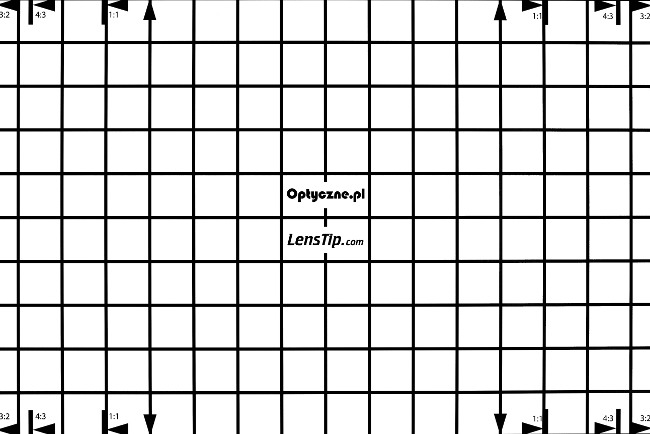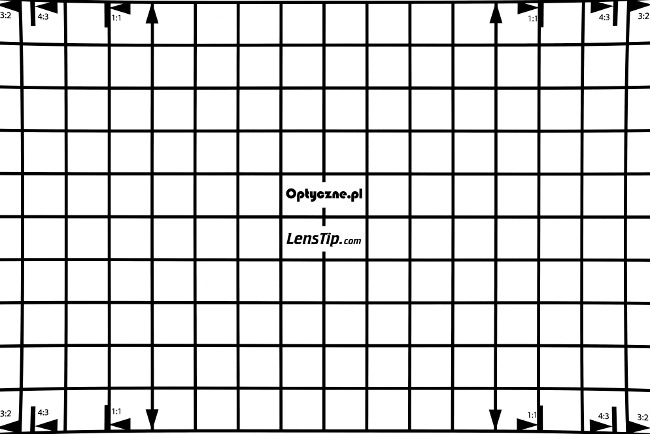Sony FE 50 mm f/1.4 GM
6. Distortion and field of view
Field of view
As we had photos of starry sky at our disposal we decided to measure the real field of view of the tested lens for JPEG files (which, in this case, are not corrected so are able to reflect the real parameters of the lens). In order to do that we transformed the pixel layout (X,Y) from the photo into the equatorial coordinate system (right ascension and declination), which locates a star on a celestial sphere. That way we could determine the field of view of the lens with utter precision and in the right way, so for rays of light coming from infinity. Our transformation was based on over 100 stars positioned evenly across the frame and average mesh-fitting error amounted to just 34 seconds of arc.In order to determine the field of view you apply pixels positioned on extreme edges of the frame and, because of that, the fitting error might be a bit higher in that place. After comparing the result for both diagonals you can say that the final error didn't exceed a level of 0.1-0.2 of a degree.
The field of view, determined that way, amounted to 48.1 degrees. It is a value a bit higher than 46.8 deg provided by a rectilinear 50 mm lens. As distortion of the tested lens is negligible (more details will be provided in a moment), a greater field than the declared one stemms most probably from the usage of a bit shorter focal length which, in this case, is closer to 48 than 50 mm.
Distortion
At the smaller APS-C sensor geometric deformations are imperceptible. The official result we got amounts to -0.27% and it's a value that, within the margin of error, brushes against zero.
Please Support UsIf you enjoy our reviews and articles, and you want us to continue our work please, support our website by donating through PayPal. The funds are going to be used for paying our editorial team, renting servers, and equipping our testing studio; only that way we will be able to continue providing you interesting content for free. |
- - - - - - - - - - - - - - - - - - - - - - - - - - - - - - - - - - - - - - - - - - - - - - - -
What's interesting, on full frame distortion is higher and it changes the sign – you deal here with its pincushion variant that amounts to +0.60%. It's a low result that doesn't give us any reasons to complain.
The change of sign after passing from one detector to the other might be caused by two factors. First, we always took photos using a chart of the same size and it means that in both cases the lens was positioned in different distances from it. Each time the lens applied a bit different optical set and it might influence the result. Still, introducing very slight moustache distortion might be a more probable explanation – it would be a barely perceptible barrel form in the centre and then it would change the sign and bend lines the other way on the very edge of the frame.
| Sony A7R III, 50 mm, APS-C | |||
 |
|||
| Sony A7R III, 50 mm, FF | |||
 |
|||






